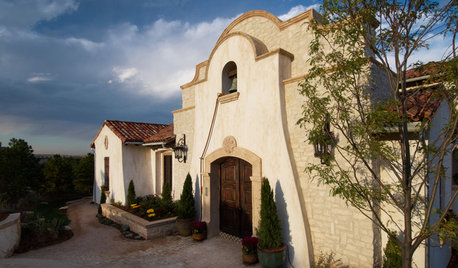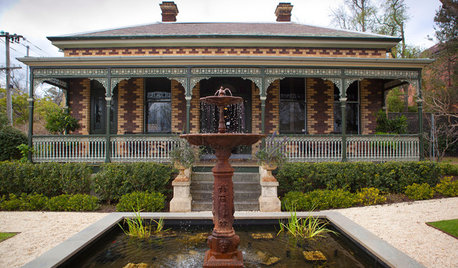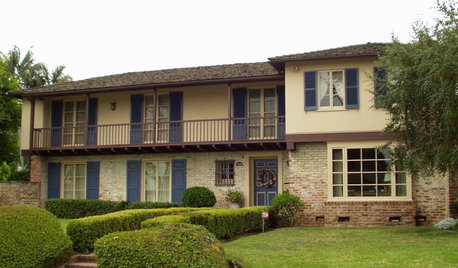Rooting Question
User
15 years ago
Related Stories

ARCHITECTURERoots of Style: Where Did Your House Get Its Look?
Explore the role of architectural fashions in current designs through 5 home styles that bridge past and present
Full Story
TRADITIONAL ARCHITECTURERoots of Style: Italianate Architecture Romances the U.S.
With its towers, cornice details and more, Italianate homes have been enchanting Americans since the 19th-century romantic era
Full Story
ARCHITECTURERoots of Style: Ranch Architecture Roams Across the U.S.
Great remodeling potential and generously spaced sites make ranch homes ever popular. Is one of the many variations right for you?
Full Story
ARCHITECTURERoots of Style: Mission
Spanish colonial missions inspired a style of architecture still popular in the United States
Full Story
ARCHITECTURERoots of Style: The Historic Australian Brick House
With their mix of old-world charm and modern extensions, Australia’s brick villas and bungalows remain well designed for today’s lifestyles
Full Story
ROOTS OF STYLERoots of Style: The Indelible Charm of American Tudors
Rich details and an intimate scale give this English-inspired architectural style memorable character and flexibilty
Full Story
ARCHITECTURERoots of Style: Colonial Monterey Sets the Stage for Unique Design
French, Spanish and English features mix in enigmatic Monterey-style architecture. Here's how to recognize this type of home
Full Story
ARCHITECTURERoots of Style: Do You Live in a Minimalist Traditional House?
Cottages, bungalows, farmhouses ... whatever you call them, houses in this style share several characteristics. See how many your house has
Full Story
ARCHITECTURERoots of Style: Queen Anne Homes Present Regal Details
Complex facades with bay windows, multiple shingle patterns and even towers make these Victorian-era homes a sight to behold
Full Story
ARCHITECTURERoots of Style: Spanish Eclectic Homes Find a Place in the Sun
Flexible stucco, intricate tiles and more have kept this multicultural style going strong for a century
Full StorySponsored
More Discussions







tapla (mid-Michigan, USDA z5b-6a)
ottawan_z5a
Related Professionals
Brentwood Landscape Contractors · Rockland Landscape Contractors · Tehachapi Landscape Contractors · Wilsonville Landscape Contractors · Arbutus Decks, Patios & Outdoor Enclosures · Huber Heights Decks, Patios & Outdoor Enclosures · Jackson Decks, Patios & Outdoor Enclosures · Lebanon Decks, Patios & Outdoor Enclosures · West Chicago Decks, Patios & Outdoor Enclosures · Annapolis Fence Contractors · Hinsdale Fence Contractors · Olive Branch Fence Contractors · Orlando Fence Contractors · Salt Lake City Fence Contractors · Whittier Fence Contractorsfignut
tapla (mid-Michigan, USDA z5b-6a)
elder
ottawan_z5a
fignut
tapla (mid-Michigan, USDA z5b-6a)
elder
tapla (mid-Michigan, USDA z5b-6a)
elder
boizeau
ingevald
dieseler
ingevald
ingevald
dieseler
axier - Z10, Basque Country (Spain)
dieseler
k2marsh